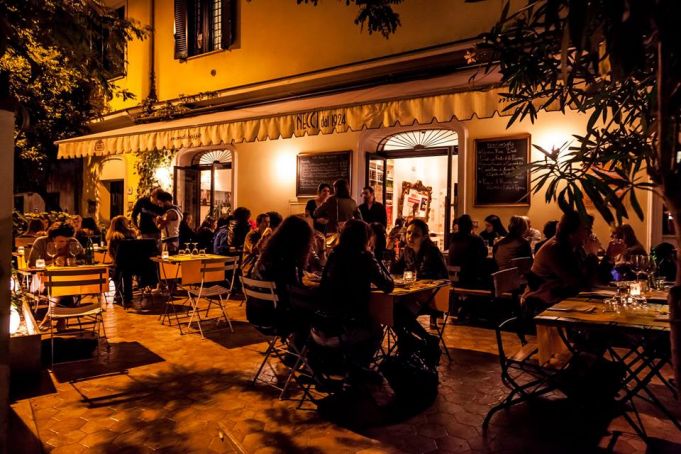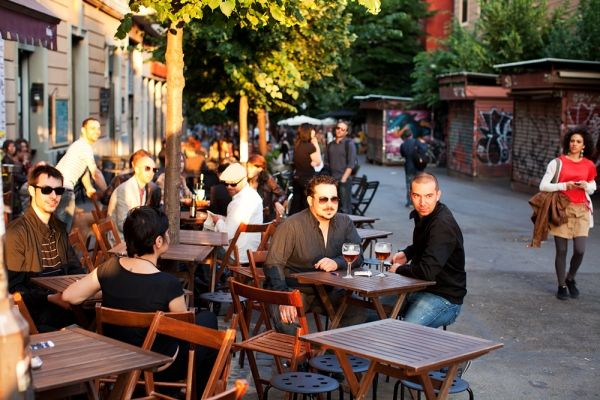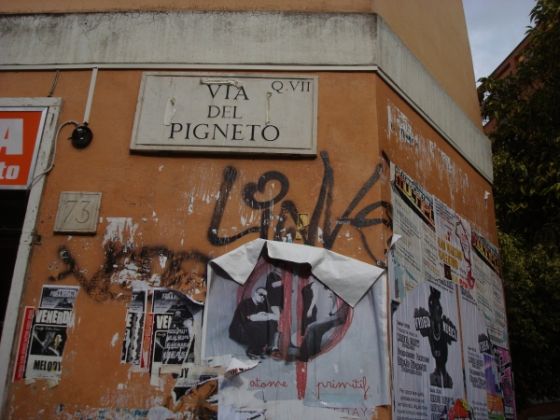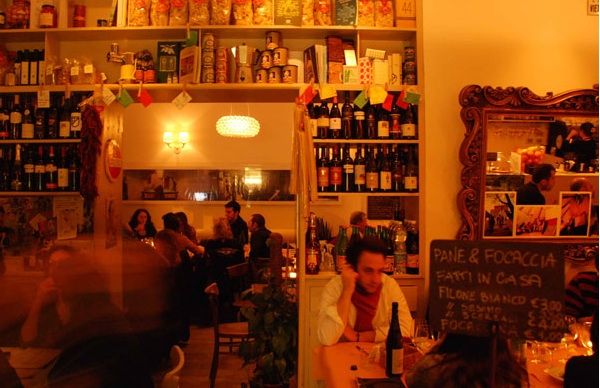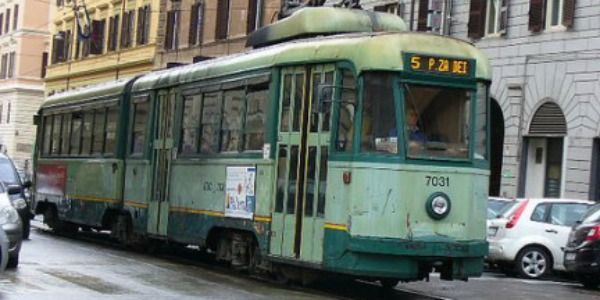Rome's multicultural Pigneto neighbourhood with working-class Roman roots.
By Martin Bennett.
Take a glint-nosed tram (no 5 or 14). A rattling ten minutes later you thread Porta Maggiore and an equally massive piece of Aurelian wall. After passing the tomb of Eurysaces the Baker – surely the most magnificent monument to a baker ever – you swing into Il Pigneto. East of Termini station and off the main tourist routes, this is nevertheless one of Rome’s most distinctive areas, a mini-cosmopolis where Romani de Roma mingle with Asians, Africans, South Americans and the odd Englishman. Bordered snugly to north and south by Via Prenestina and Via Casilina, the neighbourhood is dissected into east and west by the railway line. Just next to Piazzale Prenestino in the north is a good place to start a visit.
The embankment is flecked with poppies as if awaiting its Claude Monet, while rising from the graffiti is an abandoned signal box: Bivio Tuscolana km 651. Gaze south and the double-barrelled tunnel is topped by the sight of the Claudian aqueduct still striding strong after two millennia. Add a fig tree or two and it all seems something of a post-industrial idyll.
Yet during wartime a railway can become a liability. Any local octogenarian will readily point out how in this area, and in S. Lorenzo just down the line, fell who knows how many tons of Allied ordnance. Indeed it is world war two that gives Il Pigneto one of its claims to fame. In a so-called percorso storico (history trail) two local houses are marked. Outside Via Ettore Giovenale 95 you can read how one Ferdinando Persiano, shop assistant, amateur cyclist and veteran of Italy’s North African campaign, refused to give the fascist salute in the nearby Bar Necci. He was subsequently arrested (on another charge) and then deported, never to return. Outside Via Fortebraccio 25 is the account of how its once inhabitant, a certain Angelo Galfati, was stripped of his tram-driving job after rescuing a boy from a fascist beating. Labelled as a subversive, he joined the partisans and helped host escaped prisoners of war before they could make it south through the German lines. Then came his betrayal by one Pietro Koch disguised as an English officer.
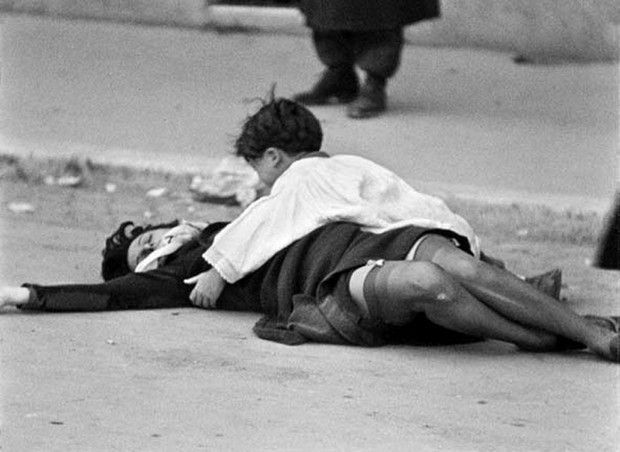
It is no coincidence then that Roberto Rossellini featured the district in his 1945 film, Roma Città Aperta. The sets and equipment of Cinecittà being mostly unusable, Rossellini “took his cameras to the streets”, to translate the sign nestling between two Asian food emporiums at the beginning of Via Montecuccoli. “For lack of ready actors, he often hired locals to act out what they had in many cases experienced firsthand – rastrellamenti (roundups), the acts of resistance and Nazi reprisals so recent in public memory.” And all this against the backdrop that is equally authentic, although the famous scene where actress Anna Magnani (in real life Teresa Gullace, a mother of five) is gunned down after seeking news of her husband actually happened near the Vatican in Via Giulio Cesare. Necessity being the mother of invention, neo-realism was born.
A decade later Pier Paolo Pasolini continued in Rossellini’s footsteps, in good populist tradition also using local streets and actors for Accattone, a bleakly alternative vision of post-war Italy. His photograph occupies pride of place in the same Bar Necci (Via Fanfulla da Lodi) where he would sit and eat. He is also remembered in Bar Rosi in Via del Pigneto, just across the railway bridge. Here you can sit on a Monday morning and savour the cigarette-fuelled commentaries of Ranieri and Ancelotti look-alikes on the football match of the day before. “Totti ha fatto bene!/ha fatto male…”, according to whether the speaker is a supporter of the Roma or Lazio team. If you ask, the owner will also take you round the back and show you a photo of the bar’s previous incarnation – a bombed-out chrysalis. Other photos show Via Prenestina plus German tank, then in 1944 the same stretch of road plus American tank. Opposite, a photo-gallery of striking neighbourhood faces puts Andy Warhol in the shade.
Come back outside and the post-match commentary goes round another circle. Here romanità – the sense of attachment felt by Romans to their city – is still alive and well, often interwoven these days with echoes of Urdu, Wolof, Mandarin, Amharic, Tagalog, Arabic and other languages. Across the railway cutting stands the Jia Yuan hotel, while neighbourhood restaurants are Ethiopian (Via Grosseto), Columbian, Brazilian, Indian (Via del Pigneto), Lebanese (Piazza dei Condottieri) and of course Italian (cf. the no-nonsense and reasonably priced trattoria Antichi Sapori in Via Macerata just off Piazzale Prenestino). Wine bars also abound – some fashionable, others distinctly not, with vini sfusi on sale for as little as €1 a bottle. For international filmgoers there is the Grauco film library/cinema where films (three a day and all undubbed) can be Danish, Russian, Mexican, Japanese: a cinematic post-Babel of opportunity.
Il Pigneto’s architecture is not as grand as Piazza Navona, another great Roman venue for sitting back and watching life go by; most of the area’s streets would fit neatly into a Cornish fishing village. But if the buildings here are three or four times lower than their uptown equivalents, so are the prices. Instead of Bernini fountains there are, courtesy of the city council, workaday nasoni you can actually drink from. Then Il Pigneto, like Piazza Navona, is more or less traffic free, the main brunt of vehicles being funneled along the Circonvallazione Casilina and the two bordering roads it joins together.
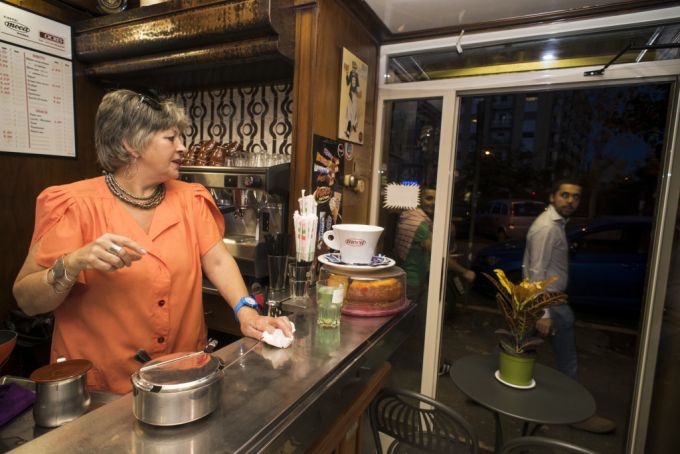
Back in Via Prenestina the tram, with its evergreen livery, follows where Roman legions once trod. Directly underneath are the ancient paving stones, their discovery in the 1960s halting the construction of a slip road for months while archaeologists took stock. Or so an old man told this writer at the so-called Torrione Prenestino, a ring of massive stone/truncated tower that started as a tomb dating back to the period of the emperor Augustus and is another local landmark. In renaissance times the Rufini family converted the tomb into a fortress and in 1741 Dominican Irish monks used the premises for a banquet to Prince Charles Edward Stuart, better known as Bonnie Prince Charlie, the Young Pretender. History paid another less fortunate visit in 1943, again in the form of Allied bombing and the renaissance add-ons were destroyed.
Two more stops and the tram rattles on toward Largo Preneste. With its standard-size apartment blocks, Rome’s periferia takes over again, along with its equally standard noise and neon. Another sway: the last glimpse of Er Pigneto is an arch of pine trees vanishing in the rear-view mirror.
For more information about the area see the Pigneto website. This article was published in the July 2010 issue of Wanted in Rome magazine.


